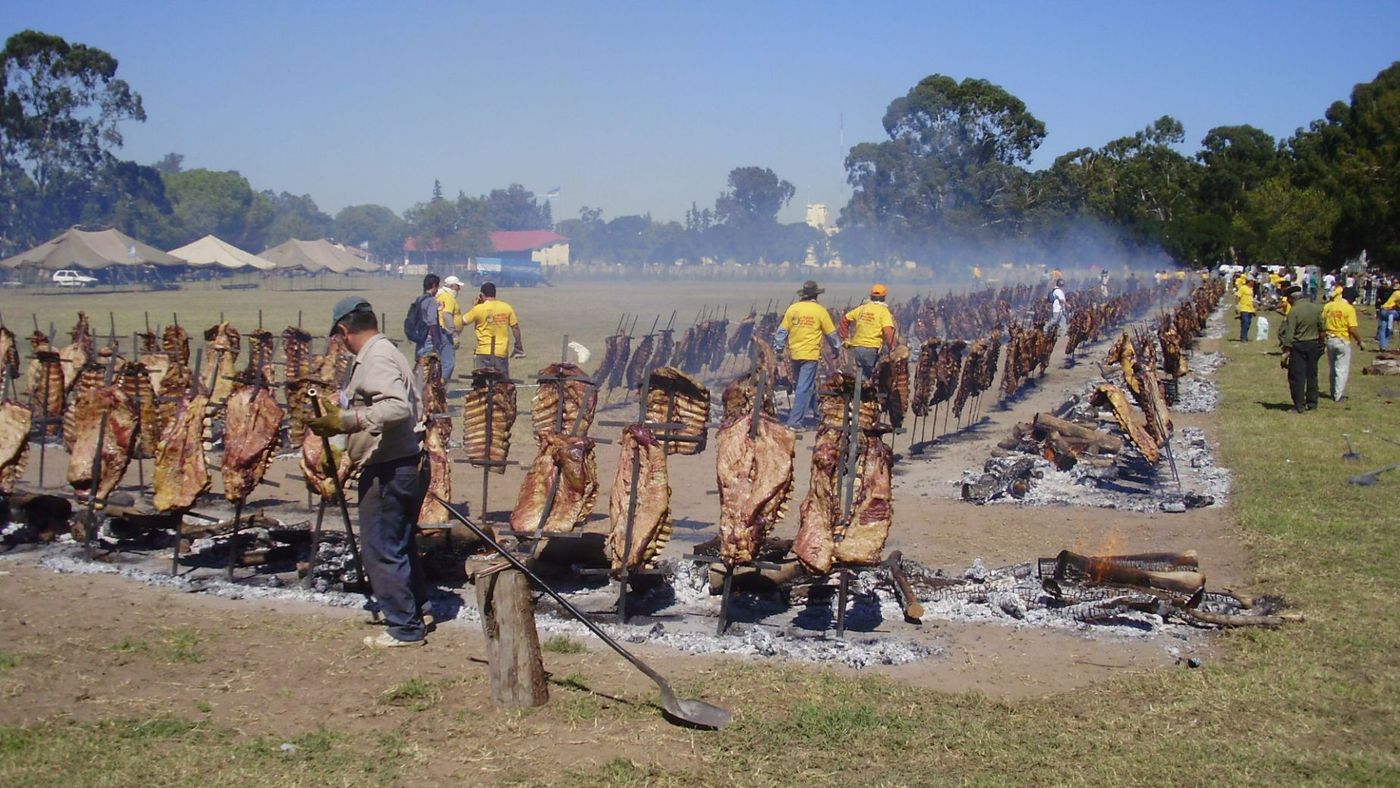We have been conditioned to see cowboys as the American staple, the white dudes with the ten gallons hats and all, herding cows through the wild west of the USA. But in reality, all that stuff was pretty much created by Mexican gauchos, chaps, hats, and all. And in real life, most cattle boys were fed beans, that most true American (and by that I mean truly the staple of the Americas) food.
There are still cowboys, dudes while truly live on the range, riding horses all day and rounding up herds, but they're not in North America, they are in the other hemisphere. In Argentina, Uruguay and southern Brazil, there's a whole culture of ranchers and dedicated meat eaters that would make paleo devotes shed tears of joy.
 |
| welcome to Buenos Aires |
As part of the immigrant culture of south America, Germans who settled there brought with them many of their dishes, and adapted them to local products, just like immigrants everywhere. Pork is not unknown in the south, but it's definitely a cattle culture, and beef is the main flesh roasted, braised and cooked in all manners and fashion.
The dish known as matambre in Argentina can find it's origin with rouladen, a German dish brought over by immigrants after the war. Thanks to my friend Valentine for pointing that out to me. Of course, some of the ingredients have been adapted, and we'll be doing the same with our preparation.
 |
| traditional matambre |
Matambre is a thin slab of meat that is flavored with a stuffing, rolled, tied, and cooked. It's that simple. Because the cooking method will be a slow cooking process, you want to use a cheap cut. In my case, I use flank steak, which are easy to obtain from my regular Asian grocery store butcher. Now, we're not talking about individual steaks here, but a good slab of a few pounds. The first part of the process involves using a long sharp knife and splitting it along the thickness. It's a tricky move, but work slowly and carefully and you'll be fine. What you want to do is get two slabs of about a half of an inch thick. Depending on the thickness of your cut, you may have to trim it further. Try to get two slabs of around the same size. Any extra trimming could then be used for other preparations.
 |
| my matambre |
Once that your meat is ready, you'll need to consider your stuffing. I would advise to use long thin cuts of vegetable, like onion, carrots, celery, bell pepper, napa cabbage, or other hardy greens. Some mushrooms always go nicely, so be generous and put in big slices. Argentinians will throw in hard boiled eggs, Germans some pickles. Personally, I have put in pitted olives to great results. Whether you flavor the meat will depend on personal taste and cooking method. Once that you have your preparation ready, you will need to roll and tie it. That is an entire skill into itself, and well worth practicing. I would advise a long piece of kitchen twine and knots at regular intervals.
Whatever else you will do, start by browning you roll to give it a nice crust. A simple sprinkling of salt and pepper on the outside will help give the crust extra flavor, just don't overdo it. You just want to make sure that most of the external raw is nice and brown.
Once that this is done, take your rolls and put them in a large enough container (a casserole dish, roasting pan, cast iron frying pan, or other oven-proof dish) and cover. If you have no lid, then use your friendly tin foil. Stick in the oven at 300 f for about an hour a pound. At this point, you have a choice between dry heat or wet. I have done both, and I have found that a good tomato sauce really helps the cooking process.
 |
| dry roasted and delicious |
Traditionally, matambre is eaten cold, or room temperature, as a sort of cold cut, but I cut it in slices and top some filler with it. It would go well with rice, bulgur, egg noodles, or orzo. You could also use it as a garnish in a home ramen soup, if you dry-cooked it. With a bit of extra vegetables, you can stretch the rolls to several people, all depending on the appetite.





No comments:
Post a Comment